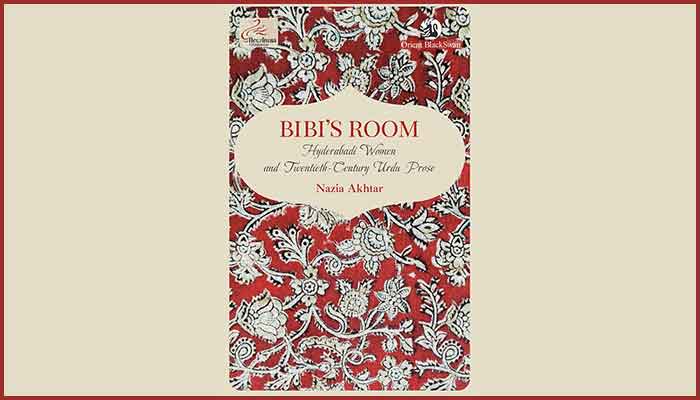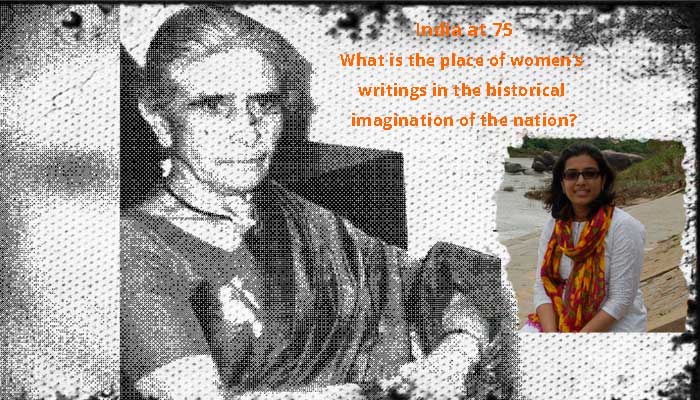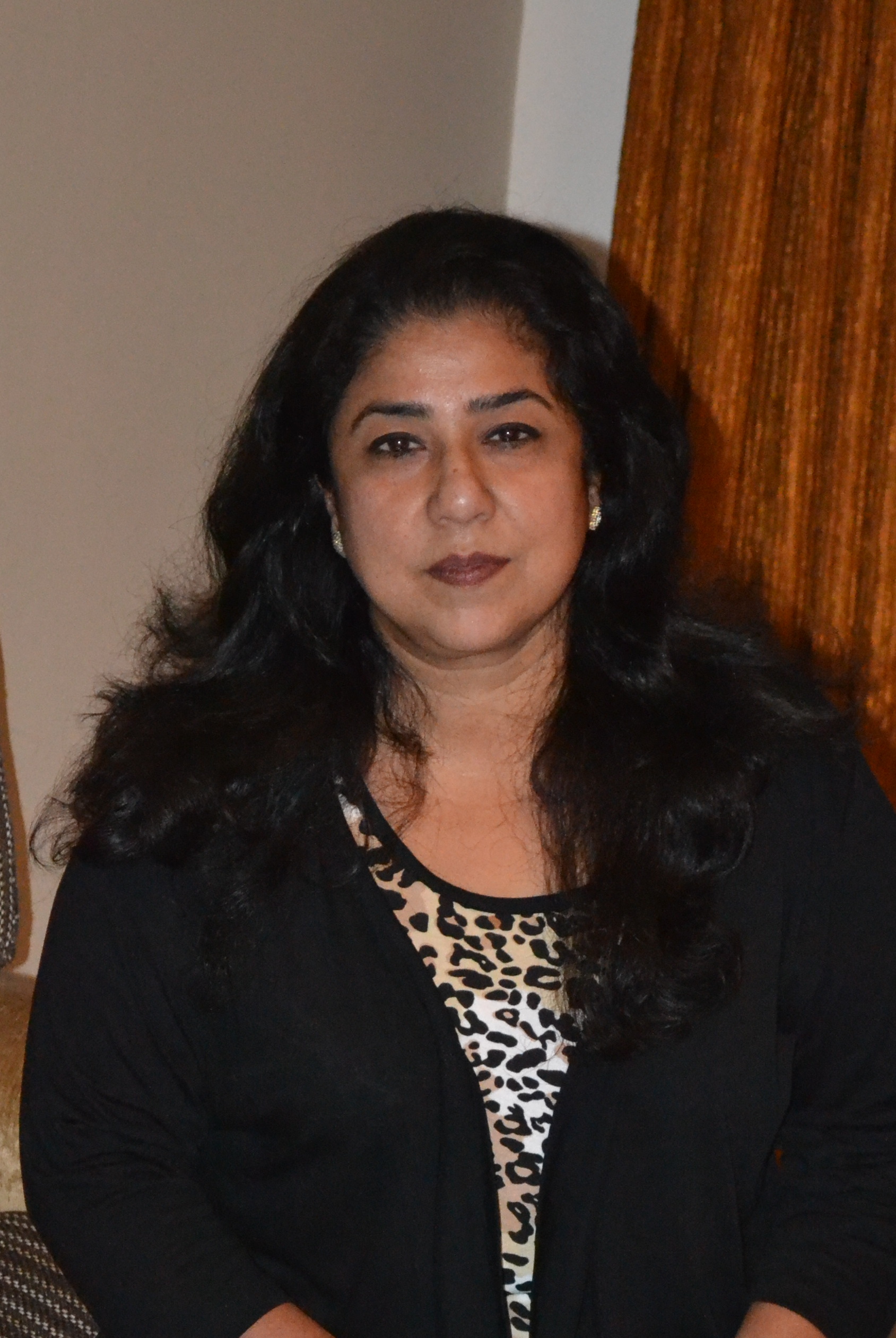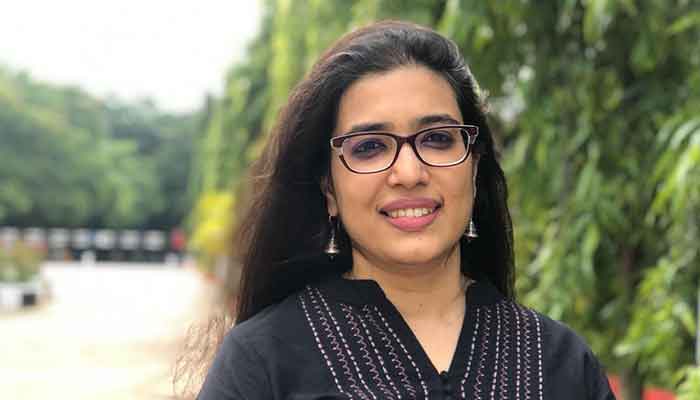IIITH’s Dr. Nazia Akhtar, author of recently launched book Bibi’s Room and literary scholar at IIITH’s Human Sciences Research Group is quarrying through mountains of old Urdu print and handwritten notes, armed only with a sturdy laptop and a can-do spirit, to curate a repository of Hyderabad’s unsung Urdu women writers.
Dr. Nazia Akhtar’s current research lies in what can only be described as the nation’s hottest topic today, taking Hisaab of India at 75.
It all traces back to a time at Ontario’s Western University, when being away from home brought into play the usual existential questions for the young English literature graduate. In her quest for language identity, the linguaphile would be drawn to two mentors, one being an international authority on Partition. Backed by impressive fellowships, the academic would come to Hyderabad for her research work and the serendipity would produce some noteworthy translation work in Urdu, a book and a series of invited talks.
The launch of Bibi’s Room: Hyderabadi Women and Twentieth-Century Urdu Prose, co-published by Orient Black Swan and New India Foundation, marks the culmination of three years of investigative research into the lives and work of three Urdu women authors: Zeenath Sajida, Najma Nikhat, and Jeelani Bano. The writers, who were almost celebrities in their lifetime, offer a rich portrayal of Hyderabad, documenting the shared syncretic society and pluralist urban culture that they prided themselves on.

Dr. Nazia Akhtar joined IIITH in 2019 as a consultant on the gender diversity committee and would play a key role in the first two years of the diversity program, which involved conducting an entire outreach and admissions campaign through virtual media. She would then go on to take up a faculty position at the Human Sciences Research Group, teaching courses in literature and history.
An important aspect of her work in the years ahead will involve literary translations of Urdu women writers, with a focus on mid to late 20th century. She is also working on other research manuscripts on the literature and history of twentieth-century Hyderabad. A recent cherished moment was the Jury Commendation that she received from the Jawad Memorial Prize 2021 for her Urdu-English Translation of a short story. “That felt really good because I am entirely self-trained in Urdu, and I wanted to know where I stand,” she says.
How the literary scholar zeroed in on Hyderabad
Dr. Nazia argues that when she joined Western University, living abroad made her turn inwards. “Being in a privileged Western location made me examine questions of identity and language”. It was at this point that she was drawn to her Ph.D joint supervisors Prof. Teresa D. Hubel and Prof. Nandi Bhatia, an international authority on the Partition. “Working with them gradually took me to the topic of Hyderabad and how it came to become a part of India. I started exploring the literary representations of that part of India’s history, which brought me to Hyderabad for my doctoral research”.
“When I came here, Hyderabadis, who are a generous and hospitable people, plied me with books written by their mothers and aunts. Over time, this collection went into the research that I’ve done. What they saw in me, even at that point, was that I was drawn to writings by women”, she observes thoughtfully. Her post-doctoral work at TISS Hyderabad a few years later would be grist for the research mill.
Working at IIITH
“The reason that I was interested in IIITH in the first place is because it is a research centered University, with an empowering atmosphere and an interdisciplinary aspect. For instance, my urgency as someone who works on Urdu lies in preservation, archiving and digitization, and what better place to do it than here! Since it is a small Institute, everyone knows one another and it has that feeling of a community as well”.
Apart from Introduction to Literature and a course on Hyderabad’s literature and history, she is most excited about the course that she will be offering. “I teach Indian and Russian literatures in translation. For next semester I’m mulling over a course on the writings of Leo Tolstoy, Fyodor Dostoevsky and Ivan Turgenev,” she comments.
How dusty motes and lengthy tomes built a book
The author had the idea for her book Bibi’s Room in 2015. It was the generous New India foundation fellowship in 2017 that gave her the financial freedom and opportunity to work in Hyderabad, polish her Urdu and immerse herself in her translation work.
The online book release was organized by Khidki Collective on July 2022. The book offers representative translations of the three women writers with a literary analysis of their lifelong work. It is framed against the larger socio- political, educational-literary context of the mid-late 20th century city in which they lived. They wrote in different genres: novels, short stories, and humorous and satirical essays.
“Luckily for me, since these writers wrote a lot, there were enough textual sources for me to build the meat and the marrow of their days,” observes Dr. Nazia, who was fortunate to have met and discussed her book with Jeelani Bano in 2017. Apart from interviews with the writers’ families and networks, the scholar would strike gold when she discovered three treasure troves for Hyderabadi texts – Urdu Hall in Himayat nagar, the Rekhta archive, the world’s largest Urdu online repository, and surprisingly, the University of Hyderabad library that housed several forgotten but valuable out-of-print Urdu texts.
How Virginia Woolf sparked Bibi’s Room
Inspiration for the book’s title came from an essay by Zeenath Sajida that extends Virginia Woolf’s argument in her essay A Room of One’s Own (1929). Woolf argued for space to be made in the literary tradition to allow women’s true potential to emerge, since societal conditions are often unfairly skewed against women. Zeenath Sajida extends this argument when she talks about the importance of time and space for Bibi, a young girl, to come into her own.
“Women write on the margins of time and space”, muses Dr. Nazia. By spotlighting these three women-writers, she aims to ignite discourse on the rich 150-year-old tradition of Hyderabadi women’s writings and bring new Anglophone readerships to their works. “In the mid-20th century, the British had spun the narrative that Hyderabad and India’s 565 princely states were backward and had no dynamic culture or progress to speak of, a view that has percolated down to modern-day historians. There is a triple marginalization on the basis of gender, region, and political formation when it comes to Hyderabadi women’s writings, and this book seeks to disrupt those concentric circles of marginalization”.
Among her memorable speaking engagements, she ranks her address at the Tasavvur Collective symposium and her talks on Fatima Alam Ali as particularly gratifying. Dr. Nazia would stumble upon a remarkable collection of the writer’s Hisaab ki Kitabein or books of expenses that went beyond grocery lists, containing insights on different aspects of her life. This was perfect material for an article that she would contribute to Scroll, an online magazine that invited the New India Foundation fellow to write about “ “India at 75: What is the place of women’s writing in the historical imagination of the nation?”

Kaghazi Pairahan and her Insta handle
Dr. Nazia Akhtar’s Instagram handle Kaghazi Pairahan is followed by university students “who want to know more about these writers, and it’s such a privilege to be able to share that with them. The invitations for my last three or four conferences and talks came over Instagram and Twitter”, she chuckles.
“I’m extremely boring”, admits the professor. “My whole life is books and coffee. I tend to work on several projects simultaneously because I get restless very quickly”. She is currently working on two major translation projects; Zeenath Sajida’s collection of literary essays, consisting of khaake (pen-portrait) and tanz-o-mizah (humor and satire) and Jeelani Bano’s novel titled Baarish-e-Sang or A Hail of Stones, which she pegs as the finest fictional account of the state of the Telangana tiller in the mid-20th century.
Life nurtured between the pages of books
Dr. Nazia Akhtar’s love for the twin cities dates back to her childhood, when her parents would visit Secunderabad every year and she would get to enjoy the local bookshops and cinema theaters. Her ability to adapt comes from her services background with her father, a fighter pilot in the Indian Air Force, hopping between far-flung air force stations.
“As a kid, I was constantly moving around and went to seven schools and 3 universities”, she says. “Growing up in small towns, the only constant was finding a library wherever I went. Even today, I have little reading corners in every room and that is where I recharge”. Her mother taught her to read when she was five years old, and recognizing her voracious appetite for reading, her father would ply her with books that led to the habit of setting up a personal library wherever she went, whether it was her home or office in Hyderabad, her parents’ house, or her aunt’s basement in Canada.
“My favorite memories on campus come from my conversations with students and interesting or funny moments that happened in class”, she reflects. “In the next few years, I would like to work with my students to build an online multilingual repository and digitize rare and out-of-print Urdu texts and journals”.

Deepa Shailendra is a freelance writer for interior design publications; an irreverent blogger, consultant editor and author of two coffee table books. A social entrepreneur who believes that we are the harbingers of the transformation and can bring the change to better our world.


Next post